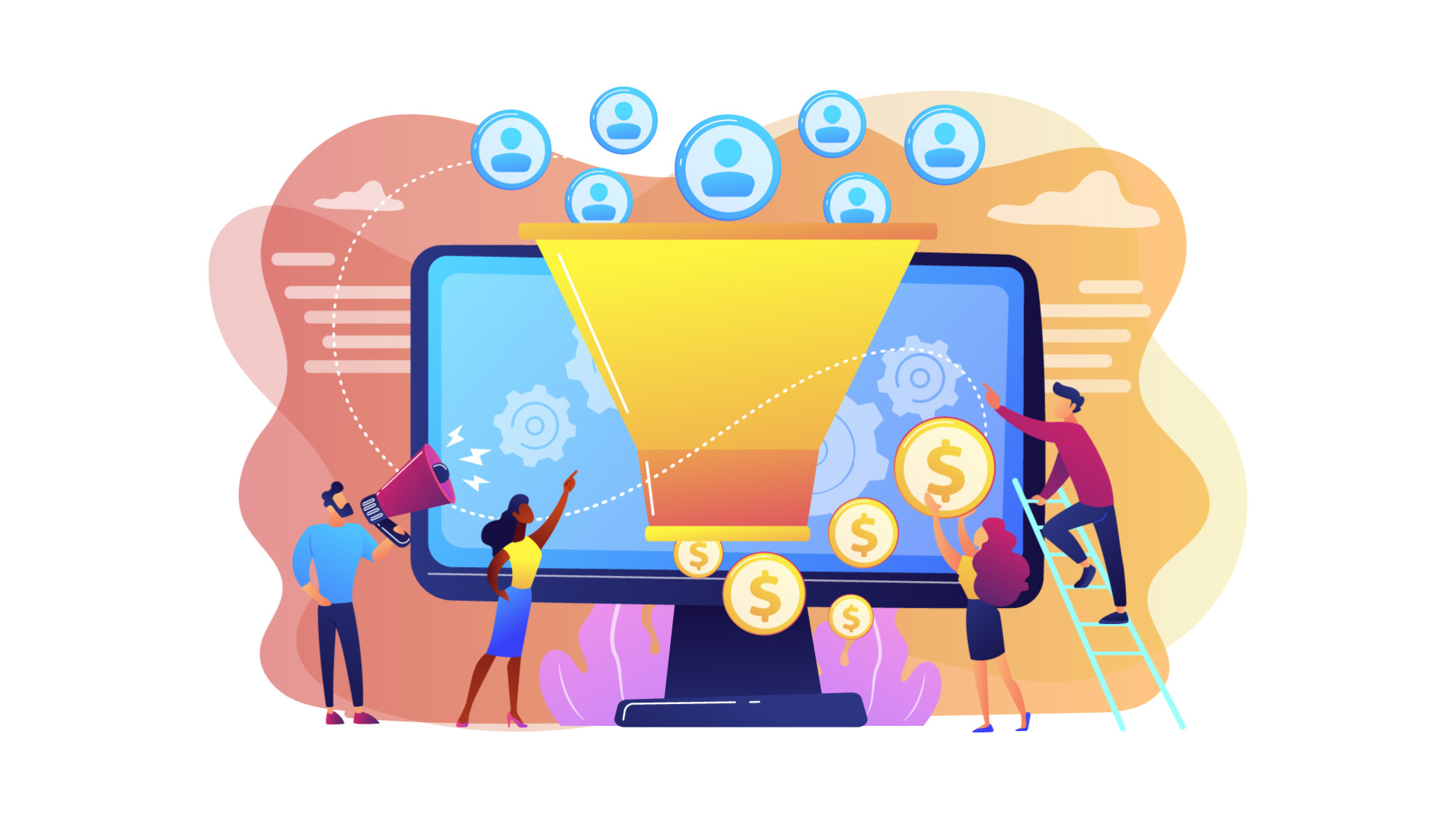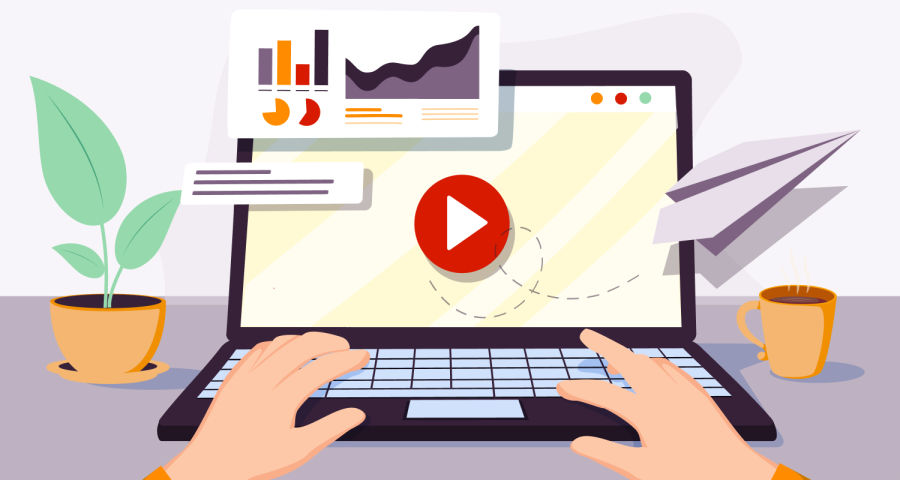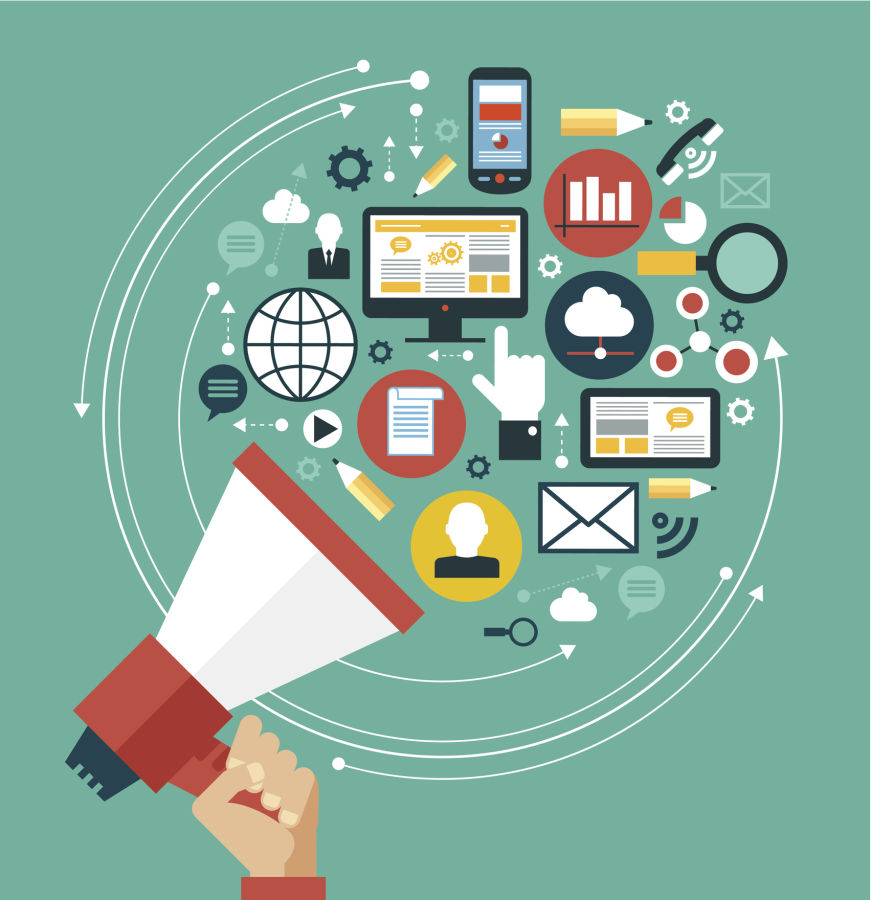//
Jul 12, 2022
Creating an Inbound Marketing Automation Strategy (with Examples)
You've finished your logo and website, created a social media presence, and started writing a blog and an email newsletter. But now you're finding you don't have the time to manage it, and neither does your marketing and sales team. You can either:
A. Let all your hard work and content collect cobwebs.
OR
B. Use Inbound marketing automation for the repetitive marketing tasks you need to do to hit the goals you've made for your business.
(Hint: B is the answer)
In this article, we'll cover how you can use automation to:
- Get targeted engagement with your content.
- Keep track of and follow up with qualified leads.
- Segment and communicate with leads from all phases of their buyer journey.
You'll also learn:
- How to use marketing automation tools.
- How to deploy your marketing automation strategy.
- The future of automation and how you can stay current with evolving automation programs.

Here are some important definitions of terms we’ll be using throughout this article:
- a marketing methodology centered around your customer’s point of view no matter where they are in their buyer’s journey. The goal of Inbound marketing is to:
- Attract new leads and conversions
- Engage prospective and existing customers with solutions and education that addresses their pain points
- Delight leads and existing customers with support throughout their buyer’s journey.
- a marketing approach in which a company offers its content and services across multiple channels, platforms, and devices like social media, email, white papers, and video.
- Using software to automate repetitive marketing tasks like posting on social media, sending emails, and deploying paid ad campaigns.
- Rather than thinking of your customers as an outcome, the inbound marketing flywheel revolves around the customer experience. Your marketing flywheel gains momentum with each conversion, qualified lead, or prospective customer engagement. It’s not a linear approach; it’s full-circle marketing!
- CRM: This acronym stands for Customer Relationship Management. In marketing, it’s a software system that manages and stores information regarding your leads and customers, like contact information, where each person is in the buyer’s journey.
- This acronym stands for Search Engine Optimization. While the details of this can seem complex, SEO is used to create more visibility and searchability on search engines like Google, Bing, etc.
Phew! OK, now that you know the important definitions relevant to Inbound marketing automation, you might ask: “So, what is Inbound marketing automation?”
Glad you asked!
What is Inbound marketing automation and why should you use it?

Traditional () focuses on reaching out to your prospects through various channels like cold-calling, flyers and mailers, billboards and bus stops, and even door-to-door sales.
With Inbound marketing, your prospects reach out to you from one of your omnichannel efforts, like subscribing to an email newsletter after downloading a free white paper you’ve offered or engaging with an organic social media campaign you recently launched.
But none of this is left to chance. Ideal leads usually don’t just serendipitously stumble upon your brand. Instead, Inbound marketing focuses on targeting your ideal customers before deploying your omnichannel marketing strategy. In other words, Inbound marketing finds the perfect prospects for them to find your company.
Why Use Inbound Marketing Automation?
Now, maybe you're thinking:
Inbound marketing sounds great, but our marketing team barely has the capacity to manage one social media platform, let alone add even more to their plate!
This is where Inbound marketing automation comes into play.
Using automation software, usually in the form of , you can let the software take the wheel when it comes to the repetitive tasks within your Inbound marketing strategy like:
- Organic social posting across all platforms.
- Tracking, scoring, and segmenting qualified and unqualified incoming leads from all channels.
- Set up mailing lists and for incoming leads in each stage of the buyer's journey.
- Providing valuable trackable data for .
The best part? After initial setup and tweaks here and there, you can continually use automation for months or years to come with no additional human hours. Continued ROI from initial setup and minimal management?
It's a win-win!
Now, let's talk about how B2B companies can use automated workflows for Inbound marketing campaign success.
How do automated inbound workflows impact campaign success for B2B?

Remember, your customer is always at the center of your Inbound marketing strategy. The first step to any campaign is identifying your target audience and the for the campaign.
Otherwise, you’ve wasted time, resources, and money sending your team’s hard work into the abyss of the world wide web.
Once you know who your is, you can use automated Inbound workflows to cater to your identified target audience’s pain points and guide them into conversion with relevant content that your prospects want and need to read and with whom to engage.
Boost visibility, create engagement, increase leads and make more money with Inbound Marketing
Follow our free, easy-to-follow video series designed to show how to attract and convert more leads— and make more money with these tactics.
How Inbound marketing automation
workflows lead to conversions:
Like many different rivers flow to the same place–the ocean, automated Inbound workflows work the same way. While every workflow is triggered a little differently, the result is always the same: put your prospect's needs first (no matter which stage of the buyer's journey they are in) and authentically nurture those leads to conversion–without lifting a finger!
Let's look at an example of an automated work
flow:
A local manufacturing company struggling to keep up with the changing demands of digital consumers hired a B2B to reach more leads and, ultimately, gain more conversions.
After the company and the team worked together to identify target audiences, the agency created a series of emails for each stage of the buyer's journey their target audience would go through. Based on those emails, the agency created optimized blog content and blasted it on social media platforms, with CTA nudging prospects to subscribe to the email newsletter.
If a prospect lands on the manufacturing company's page via the social media or blog CTA an automated workflow of emails for the 'Awareness Stage' of the buyer's journey will be triggered to nurture that lead to conversion.

- Awareness Target Audience 1>>>> Clicked on CTA from an educational and informative social media or blog post>>> triggers “Awareness Stage” Workflow >>>> Nurturing and conversion.
A different workflow is triggered if a prospect finds their way to the manufacturing company’s site by clicking on a paid ad (PPC) set up by the agency.
- Consideration Target Audience 2 >>>> Clicked on a PPC ad while searching for the solutions the manufacturing company offers>>>>Triggers “Consideration Stage” Workflow >>> Nurturing and conversion.
Yet again, a different workflow is triggered if the prospect lands on a customized landing page that offers a free infographic or white paper.
- Decision Target Audience 2 >>>> Filled out the form to be contacted by a salesperson after downloading the free white paper offered by the manufacturing company.
- customized landing page>>>>Triggers “Decision Stage” Workflow >>> Nurturing and conversion
Top software for inbound marketing automation

Just like there are many tools for different jobs in a construction worker’s tool belt when it comes to automation software, there are different types for other goals and functions like:
- Lead capturing automation
- Email marketing automation
- Social media marketing automation
- Lead segmentation automation
- Split testing automation
- B2B marketing automation
- Ecommerce automation
- Predictive marketing automation
- SMS marketing automation
And that’s to name a few!
But before you stop reading this and sign on for each one of these tools, STOP! Every company has different needs, goals, and customer needs; therefore, stacking every single automation tool out there is not a one-size-fits-all solution. Just like a construction worker probably wouldn’t use a hammer on a screw, a B2B manufacturing company wouldn’t benefit from automation software used for eCommerce.
That’s where teaming up with knowledgeable Inbound marketing automation experts is helpful. They’ll be able to suggest which software to stack and why, or even offer you solutions that house multiple automation functions in one system, like CRM.
Here are a few all-in-one CRM and CMS solutions that we use internally and suggest to our clients:
For more information about ALL the different software automation tools, check out CRM.org’s .
Need a CRM and CMS but not sure where to start? We’ve got your back! Contact us today for a discovery workshop.
The future of inbound
marketing automation strategy
Marketing automation isn’t new.
Some form of it, usually centered around email automation, has been around for decades, but as B2B marketing quickly evolves with the ever-changing digital landscape, marketing across all channels has to rely on automation. There’s no other way around it. Otherwise, you’ll miss out on millions of online companies looking for your product and services.
Take a look at some of that show marketing automation won’t be slowing down now or in the future*:
- automation
- 39% are going to use automaton for social media management
- 26% will use landing pages as a part of their automation workflows
- 23% use automation for campaign tracking
- 22% use automation for content management
READ MORE: Want more statistics showing marketing automation has increased ease of use for both companies and prospects and generated more leads and conversions in 2022?
Marketing automation trends to start implementing now to generate more leads and conversions, NOW
Every year technology gets more intelligent, more intuitive, and more involved; so do customer expectations of their buying experience. New automation trends are emerging as B2B companies focus efforts on their prospects’ digital experience.
Some of these trends include:
- Account-Based Marketing ()
- UX and CX
- First-party data will mean marketers need to merge CX with data privacy compliance.
- Behavioral analytics using AI (artificial intelligence) and ML (machine learning)
- Implementing an omnichannel marketing automation approach combining all content marketing approaches, including mobile-first content marketing and social media marketing.
- Using marketing funnel automation
- Implementing the use of chatbots
- Using value-based marketing at the heart of your Inbound marketing campaigns
Hold up! Before You Deploy a Bunch of Robots, Remember:
Ultimately, your business is comprised of humans who are marketing to humans! Don't lose the ever-important human touch, even in a robust digital landscape. When your in-house marketing team or the marketing agency you hire starts to develop your Inbound marketing automation strategy as a part of your company's overall Inbound marketing flywheel, remember who's at the center: your customer and their personalized experience. Always.
Key Takeaways:
- Once you know your target audience, you can use automated Inbound workflows.
- Every company has different needs, goals, and customer needs. Therefore stacking every single automation tool out there is not a one-size-fits-all solution. Find the right CRM and CMS for your company.
- Inbound marketing automation frees up your time by automating representative marketing tasks.
- Remember who’s at the center: your customer and their personalized experience. Always.
It’s a lot. We know.
But take a deep breath and know that you don’t have to figure this out on your own or even rush to start hiring Inbound marketing automation and SEO specialists for whom you might not even have room on the payroll. Instead, consider hiring an agency with an in-house team ready to create and deploy a custom marketing automation strategy for your business, not just any business.
Looking for an agile, in-house team of Inbound marketing automation specialists? You’re in the right place. today, and Watermark will customize your marketing automation strategy to help you get back to what matters most to your company: your customers, your team, and your mission.







